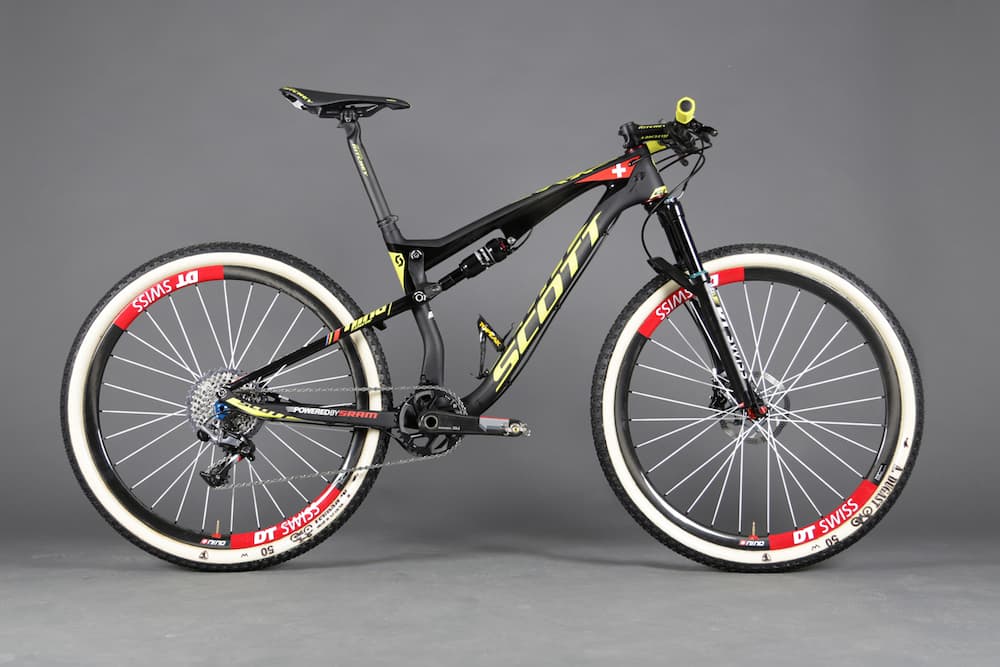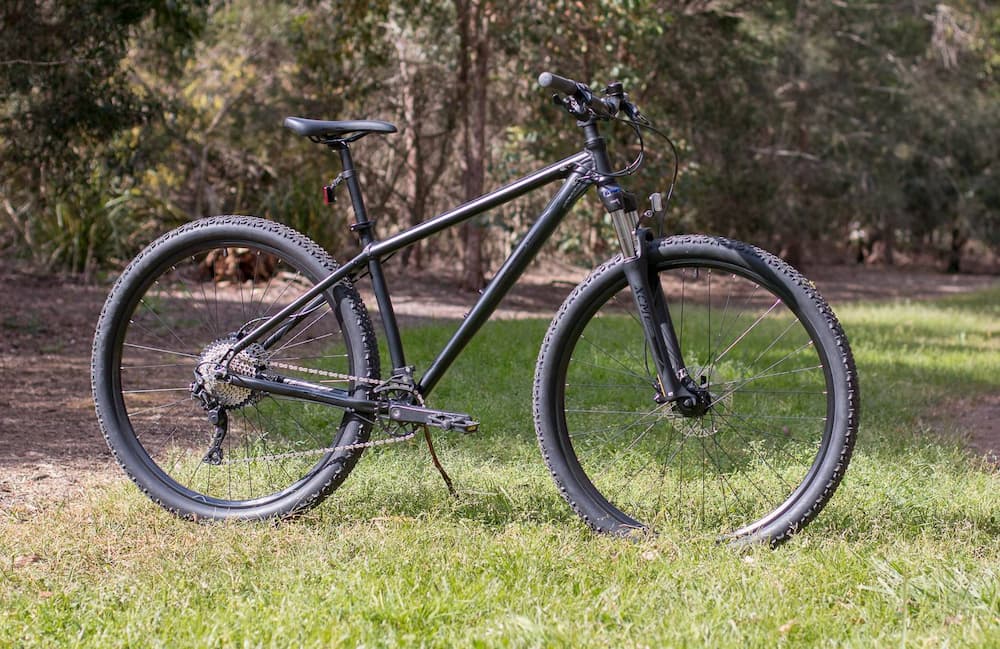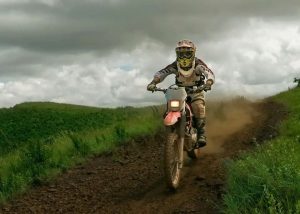You’ve come to the right place if you’re looking to learn more about 29er mountain bikes.
29er bike, the newly emerging breed of mountain bikes, have become the new norm in many What benefits do 29″ wheels have for MTB disciplines? What are the advantages of riding a 29er mountain bike over a 27.5 MTB, and more importantly, what is a 29er mountain bike?
If you have any questions about the 29er, we have the answers. Ready to master the 29er?
Let’s get it.
Table of Contents
What Is A 29er Bike?
You must comprehend what a 29er bike is and how it differs from other mountain bikes before we can discuss the advantages of 29er mountain bikes.
Without a doubt, mountain biking is a highly competitive sport. As a result, businesses that produce bikes compete with one another and are constantly looking for ways to improve their products’ performance.
29er bikes also referred to as two-niners and 29&Mountain bikes with 29-inch wheels are known as prime MTBs. The “29” refers to the diameter of the wheels these bikes use (with a tire mounted). 29&In addition, MTB wheels have the same diameter as 700c road bike wheels.
What Purposes Do 29er Bikes Serve?
29er Bike are used in both recreational and competitive mountain biking disciplines and competitions.
29-inch mountain bikes are one of the most popular classes of mountain bikes, and are steadily becoming the go-to choice for many professional MTB riders.
Even though 29er Bike are best for intense competitive cycling, amateur cyclists and trail newbies can gain from their improved stability and traction.
29er Bike are also incredibly versatile. A 29er is an excellent choice for cyclists who want to ride a variety of MTB disciplines because it’s difficult to find terrain that they can’t handle.
However, 29er Bike must have some drawbacks, right? Continue reading to learn the benefits and drawbacks of riding a 29er.
Where Did 29er Bikes Originate?
Dr. Alex Moulton, known for his comfortable small wheelers, created an all-terrain bike with 20-inch wheels way back in 1986. Sadly, the Moulton ATB had a fairly significant flaw. All the tiny dips and bumps that a 26er would hardly notice disturbed its 20-inch wheels excessively.
Therefore, despite the comfort and control provided by Moulton’s suspension – at a time when the majority of mountain bikes were fully rigid – his ATB didn’t last very long.
If you have ever used a BMX on a legitimate mountain bike trail, you are aware of how unpleasant the experience can be. Smaller wheels and shorter wheelbases make it more difficult to ride on uneven terrain. Just consider how much easier it is to roll over uneven ground with a larger wheel due to its shallower angle of curve.
But is it also safe to assume that larger wheels will move over uneven terrain more quickly? Contrary to popular belief, complications arise whenever you introduce ideas that challenge the idea that “all other things are equal,” since this is never the case.
The first mainstream 29er Bike had promise, but were constrained by a small selection of suspension forks and geometry that essentially tried to imitate that of 26ers.
Despite the promise of Gary Fisher’s early Genesis measurements, it has only been in the past few years that designers have begun to fully grasp the distinctions between ideal 26er geometry and ideal 29er geometry.
It involves more than just adjusting frame angles. The overall stability and ride feel of the entire bike are influenced by the length of the fork, stem, top tube, and bottom bracket.
For example, all types of suspension, including those with large tires, are supposed to make the terrain appear smoother. However, installing suspension around 29-inch wheels is trickier than doing so for 26-inch wheels. There isn’t enough room to fit everything in without redesigning the frames. Additionally, for a bike to perform at its best, larger wheels typically call for a different frame geometry.
Why Choose A 29er Bike?
The 29er mountain bike began dominating the market a number of years ago. The cry “26 ain’t dead” quickly became the anthem of the skeptics – a dying anthem as it turns out. I believe it is safe to say that the 26-inch wheel has officially passed away at this point. Because 29er Bike have established their superiority. Here’s why.
Faster On The Ups
The world’s fastest cross-country racers are no longer experimenting with smaller wheels. Nowadays, 29er mountain bikes are preferred by almost all lycra-clad speed freaks, from weekend warriors to World Cup competitors. In actuality, there was a purpose behind their early adoption of the big hoops. They cherished them and rode them. The extra grip on the back wheel for those challenging technical ascents never hurt when the trail was pointing up. Oh, and the rollover benefit wasn’t bad either.
Faster On The Downs
Large hoop descent is quicker. Riders who specialize in downhill and enduro racing were interested in XC. Particularly when the trail leads downhill, they could see the advantages. In fact, it’s amazing how quickly 29er mountain bikes are supplanting traditional downhill bikes in the World Cup. Many racers have chosen 29er Bike in the past year. Although DH riders took a while to adopt 29er Bike at first, once they did, the floodgates opened. The advantages of a 29er for descending are not just for the top skiers in the world. Bigger wheels on the descents have advantages that riders of all skill levels and riding styles can enjoy. 29er Bike carry momentum better, a crucial element to maintaining speed on the trail. Aside from that, there is also traction. Larger wheels result in a larger turning and braking footprint. Every root, rock, and hole simply seems smaller when you’re riding a 29er.
More Fun
29er Bike are more fun. Unpopular assertion? Just give me a chance; maybe. Remember how I said that 29er Bike are faster? I suppose that faster is better for fun. Initially, 29er Bike were criticized for being slow and unplayful before modern geometry and technology caught up. That justification no longer often holds up. Have you recently used a 29er? 29er Bike are just as playful as their smaller wheeled counterparts while instilling more confidence in rough terrain. They offer a smoother ride, too, in case I forgot to mention it. Together, these factors increase how much you enjoy riding. That is to say, more enjoyable.
Options Abound
Options abound. Try searching online. There are more options than ever for tires, forks, frames, and rims. The days of being unable to use your preferred tires because a 29-inch version wasn’t produced have long since passed. In fact, if you choose smaller wheels, you’re probably more likely to run into that issue. More options are available than ever before, even for downhill riders on 29er Bike. No longer does inventive jerryrigging, as it once did, go into assembling a downhill 29er race bike. Furthermore, a lot of fork and frame manufacturers let you swap out your 29er wheels for 27.5 plus wheels. For looser terrain or if you just want more comfort on the trail, Niner actually produces a number of models that are compatible with 27.5 plus wheels. 29 inch wheels also have the same diameter rim as road, gravel, and cyclocross bikes meaning more wheel and tire options for all your bikes!

What Sports Or Events Involve 29er Bikes?
How are 29er Bike used in MTB competitions?
- UCI Mountain Bike World Cup
- UCI Mountain Bike World Championships
- Olympic Mountain Biking
- Enduro World Series (EWS)
- Megavalanche Alpe d’Huez
- Red Bull Rampage
- Crankworx Competitions
What MTB disciplines utilize 29er Bike?
- Downhill MTB
- Cross Country (XC) MTB
- Enduro
The Pros And Cons Of Bigger Wheels
What draws people in, then? 29er Bike offer several big advantages over their smaller-wheeled siblings:
- Better rolling momentum results in more progress for less effort and faster rolling over open terrain.
- improved traction and control when climbing or turning due to a larger tire contact area on the trail.
- A higher “attack angle,” meaning the wheels roll over trail obstacles with less impact, reducing fatigue and smoothing out the trail.
Riders report that a 29er gives a feeling of enhanced stability and control, decreasing the “sketchiness” of the riding experience. With less on-the-road panic attacks, people will feel more secure and at ease.
Wonderful, but what are the drawbacks? The trade-offs are negligible: a slight weight penalty for the heavier wheels and a slightly slower start-up acceleration. That’s it!
Who Can Ride A 29er?
While many people can find a good fit on a 29er, short riders (male or female) have fewer sizing options. Why?
The standover clearance is the principal issue. A 29er mountain bike can be too tall for smaller riders because it is frequently taller than a bike with a 26-inch wheel of comparable size. Other potential issues for shorter riders include toe overlap with the larger wheel and an incorrect handlebar height. As a result, medium, large, and extra-large frames are widely available for 29er Bike, with small frames and frames made specifically for women just beginning to gain popularity.
If you are under 5’6″ tall, a 26-inch mountain bike is still likely to be a better fit. Finding a 29er model that fits someone who is at least 5’6″ tall should be possible. The size and frame geometry of a 29er will give riders over 6 feet tall a more comfortable riding position.
Ways To Shop For A 29er
Know your riding intentions and how you want to use the bike before choosing a 29er, as you would with any bike.
Not all 29er Bike ride similarly. Some models are lighter, faster, and more maneuverable than others, as with any category of bikes. Some 29er Bike are made for racers, while others are made for weekend enthusiasts and still others are made for infrequent riders who want a single bike to accomplish a variety of tasks. For assistance with these details, consult REI.com’s product descriptions.
Hardtail mountain bikes—bikes with only the front suspension—are currently the most popular 29-inch mountain bike type. As appropriate suspension and frame designs advance, full-suspension models are appearing more frequently.
Remember that you would need more than just bigger wheels if you were to simply upgrade your current bike. Unfortunately, since frames and suspension are made to support a specific wheel size, 26-inch wheels and 29-inch wheels cannot be interchanged on a frame.
To understand the relationship between bike quality, performance, and price, it’s best to discuss brand and model options with an informed sales specialist (at REI or other specialty bike shops). Select no more than two or three models, and test drive each one to determine which one is most comfortable.
Read about What Is A 700c Bike?
29er Bike FAQs
Are There Any Maintenance Needs For A 29er Bike?
Like all off-road riding, your 29er will sustain wear and tear over time. As a result, you should regularly check and maintain the parts of your bike to make sure it stays in good shape.
Before each ride, check and clean your suspension systems, chains, brakes, and tires. You should also regularly wash your bike after riding on muddy trails.
Your neighborhood bike shop will be able to assist you if you are unable to finish any of these tasks.
Environmental Impact Of Using A 29er Bike
29er mountain bikes should only be used on designated trails. Outside of designated riding areas, mountain biking can be detrimental to the local fauna and flora.
The additional environmental benefit of lowering your carbon footprint comes from using your 29er for commuting as well!
What To Wear When Riding A 29er Bike?
A mountain course on a 29er bike can be challenging in bad weather. To keep yourself protected and comfortable at the same time, you’ll want to wear the appropriate clothing and safety equipment.
Wearing certain things while riding a 29er can also depend on the weather. In order to be as comfortable as possible while riding in the colder months or at higher altitudes, it may be necessary to layer your clothing.
Some items of clothing you may want to invest in include:
- Shorts or pants with pads or padded liners
- Biking jersey that wicks moisture
- Thermal layers
- Pedal-compatible footwear
- Gloves (fingerless or full)
When Using A 29er Bike, What Accessories Are Recommended?
Numerous accessories are available for 29er mountain bikes, in addition to helmets and other safety equipment (discussed below).
These include:
- Bike repair kits
- Portable tire pumps
- GPS trackers and fitness monitors
- Saddlebags
- Lights & reflective clothing
- Hydration bladders
- Backpacks
- Bike locks
There are numerous choices for protective gear that you might want to take into account. An essential piece of safety equipment is a helmet. Other options include:
- Full face helmets
- Chest and back armour & bracing
- Elbow & knee pads
- Protective UV glasses/goggles
- First aid kits
Consider your helmet to be a separate part of your bicycle. The same can be said about bike locks.
Use a high-quality bike lock if you care about the safety of your bicycle and don’t want it to fall into the wrong hands.
Do Taller Riders Benefit More From 29er Bikes?
In general, finding the ideal fit may be difficult if you are a small person. Shorter arms may be a problem, but it depends on the bike’s geometry. Despite not being particularly tall myself, I have no problems wearing my 29er. Test out various bike models and wheel sizes to see which one feels most comfortable.
Which Is Better, 27.5 Or 29er Bike?
Pros and cons can be found for both. A 29er is more stable and conducive to greater speed, whereas a 27.5er is more playful and responsive. Once more, before making a choice, test out various setups at your nearby bike shop or rent a few. It is unfortunate to make a purchase you later regret; instead, you should take pleasure in your MTB riding.
Is 27.5 Equivalent To 650b?
Yes, a 650b wheel has an approximate 27.5 Prime diameter when measured from tire edge to tire edge.
Final Words
After weighing their benefits and drawbacks, 29-inch mountain bikes are obvious to have many advantages. Many mountain bikers adore their 29er and wouldn’t trade them in, even though not everyone is a fan. However, a small percentage of people can’t help but feel sluggish all the time.
Though there are fewer bikes to choose from when going for smaller wheels, the 27.5-inch is a great compromise allowing for a more fun ride and a responsive and flexy bike.
I can’t tell you which one to choose because it’s a matter of taste and depends on how you feel.
Regarding your reading, I thank you.



